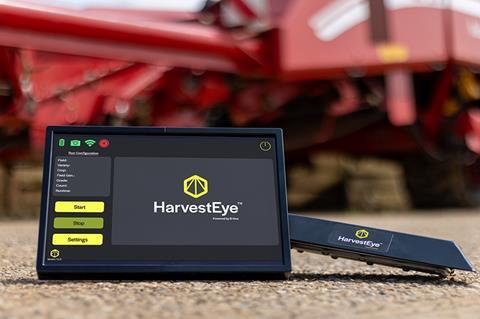Tool has been further upgraded following launch of version 2.0

Crop insights tool HarvestEye has been expanded to offer solutions to onion growers.
Fitting to harvesting or grading equipment, HarvestEye delivers visibility on the size, shape and mapping variability of crops as they are lifted.
Initially functioning with potatoes, HarvestEye announced its 2.0 system this year with refreshed software and hardware to deliver faster crop measurement and more accurate data collection.
Its machine-learning model has now been refined to support different varieties of onions.
Ed Strawson, sales account manager at HarvestEye, said: “HarvestEye brings to the onion market an advanced harvest monitoring tool for growers and packers that can help to make decisions during harvest to get the most from their crop.
“The size range of onions that can be sold in the supermarkets as whole vegetables, typically in a three-pack net, is very specific and therefore can be very challenging for growers to determine the best time to harvest.
“HarvestEye provides greater visibility on whole field performance and provides a realistic overview of what stock can be allocated to whole onions for maximum profit, and what’s best for slicing and dicing to be sold wholesale.
“Onions grow very quickly so it’s important that growers have the tools to make smart decisions to optimise their produce, reduce waste and increase profit, contributing to higher supply chain confidence and a more sustainable onion industry.”
Vidyanath Gururajan, managing director of HarvestEye, added: “We are continually engaging with growers as we look to advance the capabilities of HarvestEye. Our goal is to expand the range of crops and conditions the system can operate with to support their specific requirements.
“Growers in the UK have reported tremendous benefit to using the HarvestEye 2.0 during this recent harvesting season and, with this added compatibility with onions, we’re incredibly excited at the prospect of more growers being able to take advantage of these tools during their respective harvests across different global regions.”



